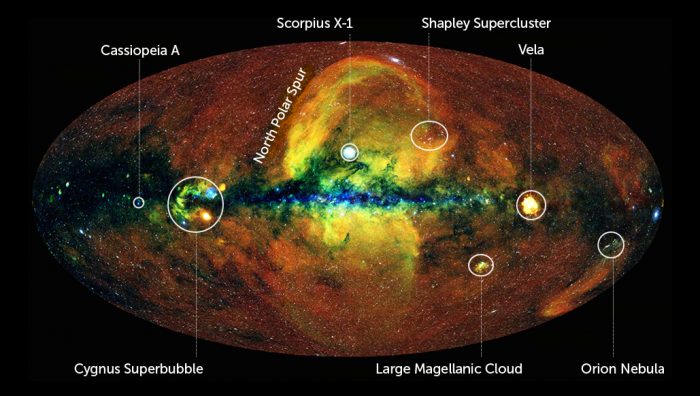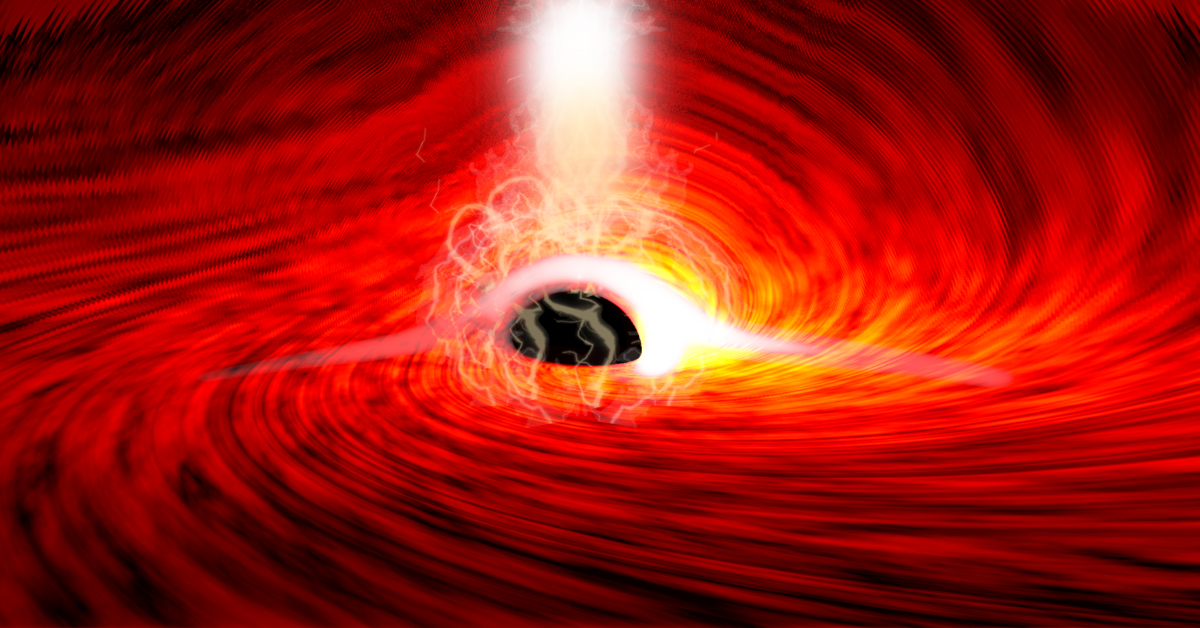When we think of a black hole, a mental picture might come to mind: A giant dark hole sucking in all surrounding matter and light in a chaotic spiral. It’s a region in space-time where gravity’s pull is so massive that not even light can escape its grasp.
A strange and intriguing place in the universe indeed.
But when scientists stalked a supermassive black hole in the centre of a distant galaxy – with the catchy name I Zwicky 1 – some 800 million light-years away, they saw something completely unexpected.
Published in the journal Nature, the scientists discovered light coming out from Zwicky’s tushie – a first-ever finding that light is emitted from behind a black hole, which also further confirmed a scenario predicted by Einstein’s theory of general relativity.
Strange observations at a strange place in the universe.
Led by Stanford University astrophysicist Dr Daniel Wilkins, the international team of researchers was on a mission to investigate why hot gasses that fall into black holes become superheated and glow intensely, making black holes not so black at all.
But as they were checking out the black hole with NASA’s NuSTAR and the ESA’s XMM-Newton telescopes, they were in for an unusual treat. The researchers recorded additional flashes of X-rays that were smaller, later and of different colours than the bright flares that are commonly emitted by black holes as they gobble up everything around them.
After careful analysis of the flare’s “echoes”, the researchers came to a serendipitous conclusion that the X-ray emissions they were observing actually originated from the far side of the black hole.
“Any light that goes into a black hole doesn’t come out, so we shouldn’t be able to see anything that’s behind the black hole,” said Dr Wilkins. “The reason why we can see that [light] is that the black hole is warping space, bending light and twisting magnetic fields around itself,” Dr Wilkins explained. Essentially, the colossal black hole warps space-time mediums around it (i.e. gravity), allowing light to bend around it and escape from behind the black hole.
Einstein, always ahead of his time.
More than a century ago, Einstein proposed two interrelated theories: special relativity and general relativity. They were altogether encompassed by the theory of relativity.
General relativity theorises that a massive object can warp space-time around it, creating what we experience as gravity. This aspect of the theory has been proven countless times, perhaps most famously during a solar eclipse in 1919, when astronomer Sir Arthur Eddington confirmed that the sun’s gravity can bend the light from stars – just as Einstein predicted.
While astronomers have since used this phenomenon, also known as gravitational lensing, to observe the bending of light around distant galaxies, Dr Wilkin’s new study takes the phenomenon to a whole new level.
“It’s gravitational lensing at its most extreme,” says Dr Wilkins.
The new knowledge provides another piece to the general relativity puzzle, enabling astronomers all over the globe to better comprehend myriad objects in the universe which include galaxies, stars and black holes themselves.
It’s astounding to think that Albert Einstein, one of the greatest minds ever lived, was so far ahead of his time. It’s also humbling to witness the progress humanity has made in such a short span of time to uncover the mysteries of the vast universe.
We now even have the most complete map of black holes ever. Check it out here!

Each bright spot in this image, the first all-sky image by eRosita, is a black hole or a neutron star. (Image credit: Jeremy Sanders/Hermann Brunner/Andrea Merloni/Eugene Churazov/Marat Gilfanov/IKI/eSASS/MPE)




































